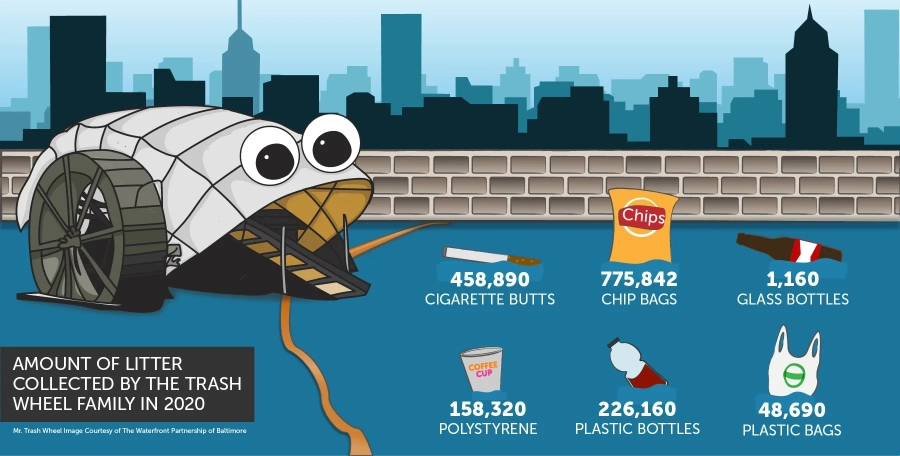Stormwater Runoff
When precipitation falls on roads, streets, rooftops and sidewalks, it can push harmful pollutants like fertilizer, pet waste, chemical contaminants and litter into the nearest waterway.

Show image description
Mr. Trash Wheel, a machine with large eyes, wheels and a chute, before a city skyline. Litter collection figures for 2020 appear: 458,890 cigarette butts; 775,842 chip bags; 1,160 glass bottles; 158,320 polystyrene; 226,160 plastic bottles; 48,690 plastic bags.
